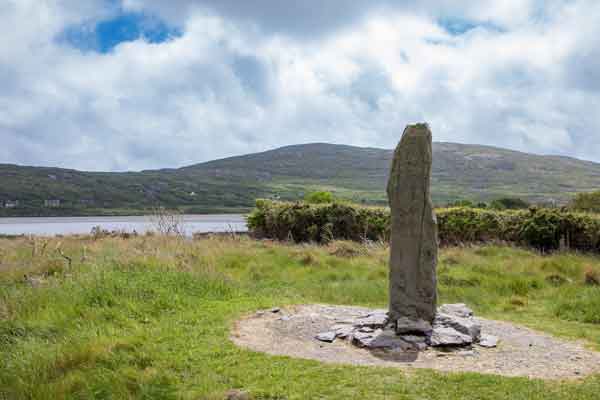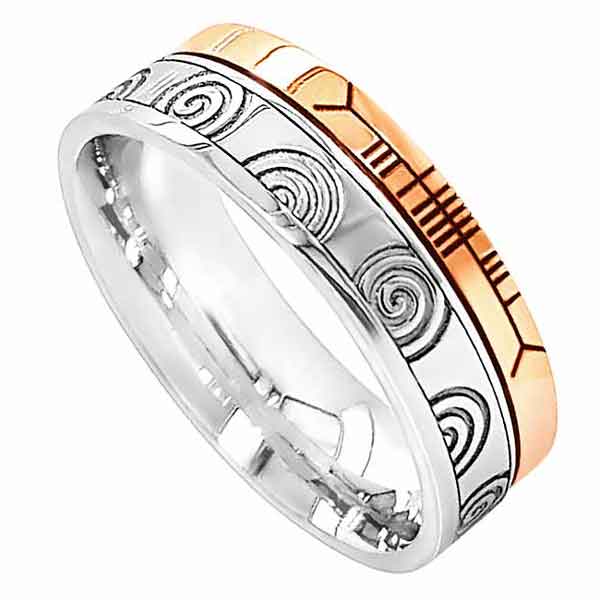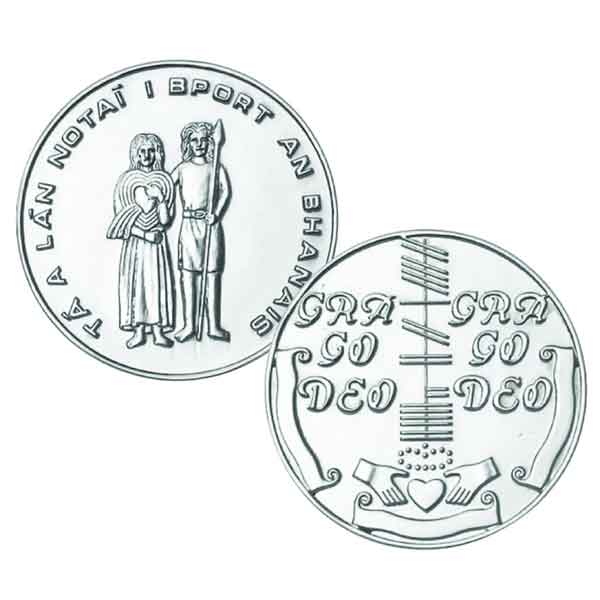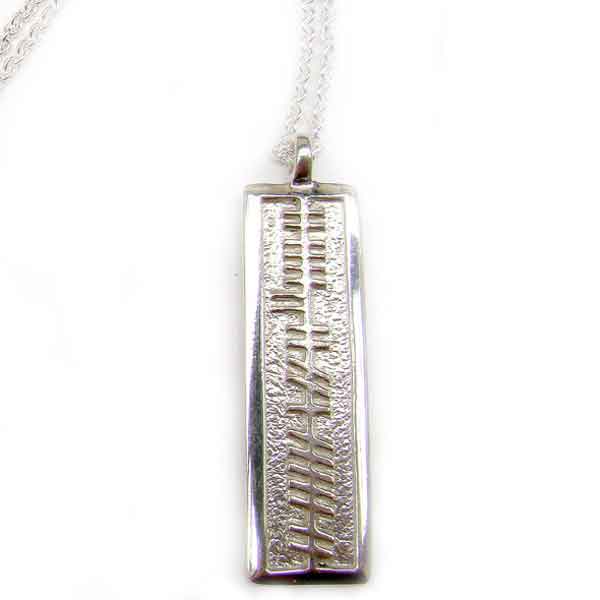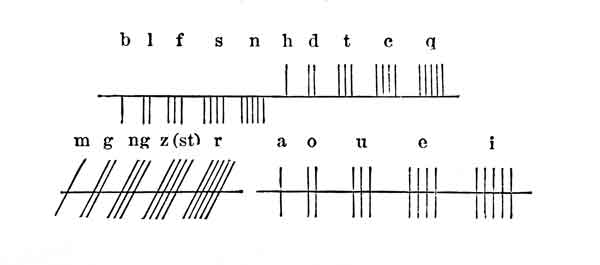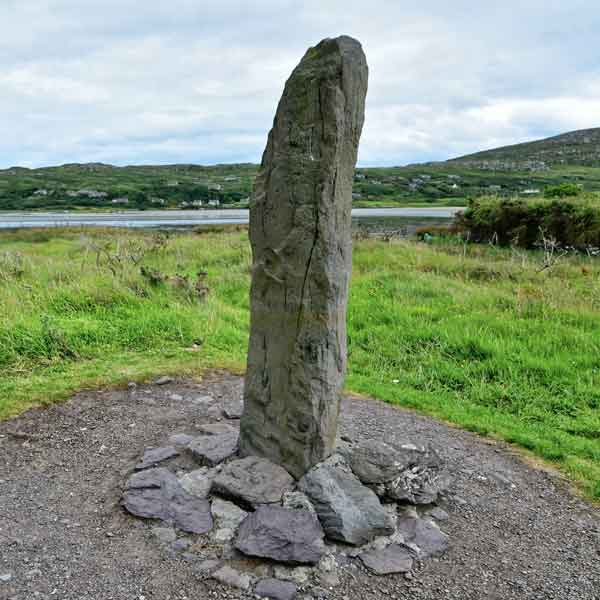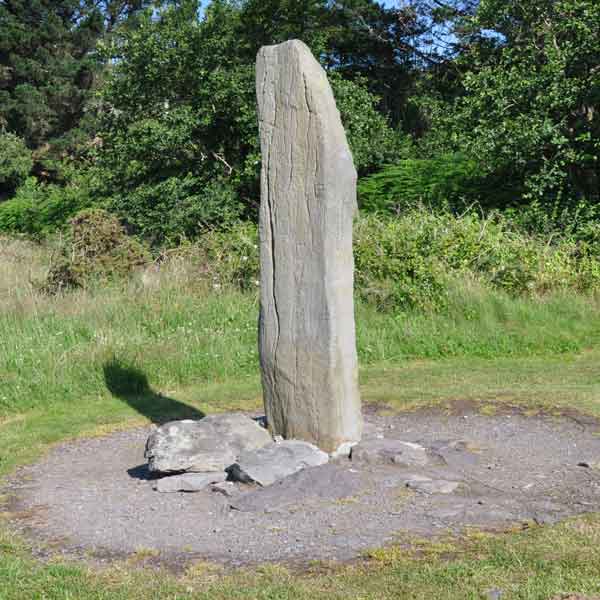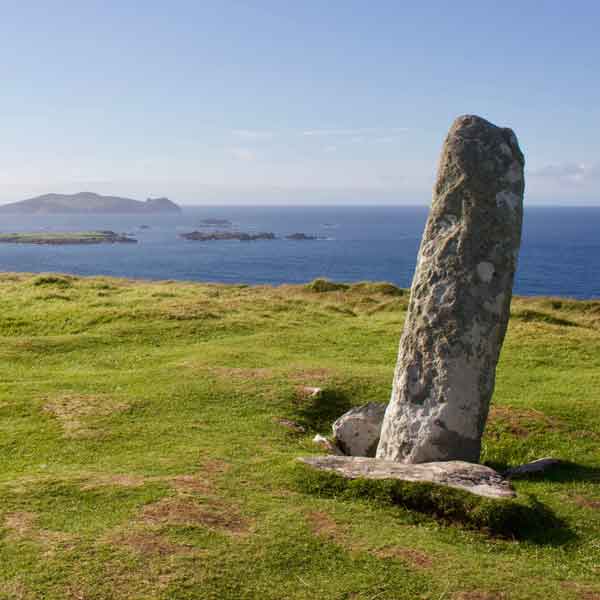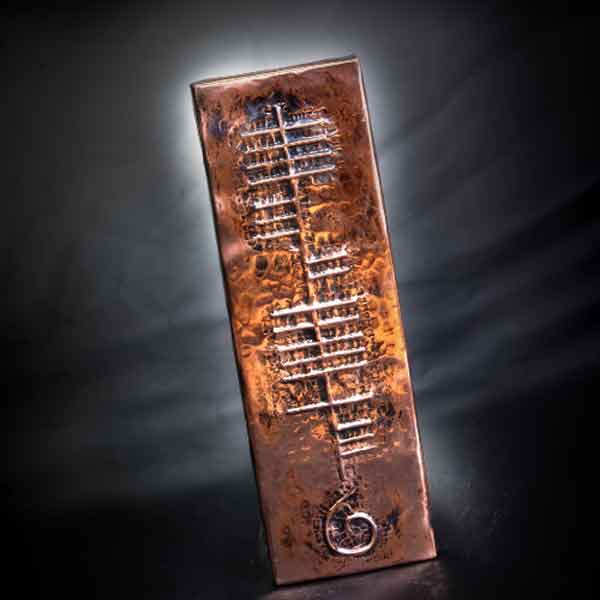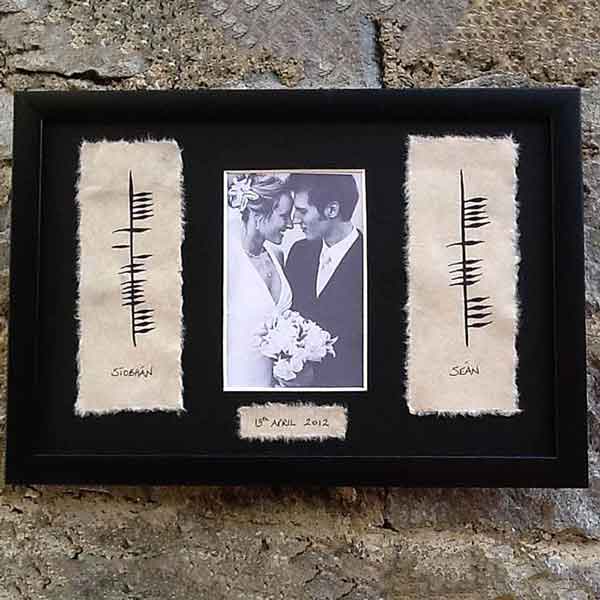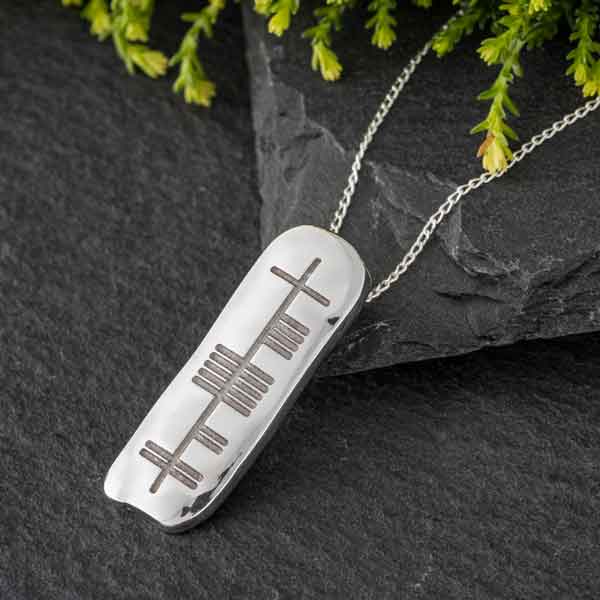We treasure Irish gifts because of the connection they foster to not only the modern Irish Republic but the ancient Celtic nation. Our Irish ancestors had a sophisticated society that valued nature and storytelling. They were in touch with the earth and the most primal elements of the human soul in a way that we yearn to be now in today’s busy, high-tech world. A mug, picture frame or piece of jewelry with a Celtic motif can be a touchstone to remind us to slow down and make time for what really matters.
Ogham was Ireland’s first written language, dating back to the fourth century AD. Named for the pre-Christian god of eloquence, it uses a variety of slashes on a center line to represent 25 different letters, though it originally only had 20 letters, with the additional letters only in use later for manuscripts. Each letter is named for a plant or tree, such as Beith (Birch), Dair (Oak) or Uath (Hawthorn). The script usually reads from the bottom of a line to the top, and the lines are read from left to right – but our ancestors did not have hard and fast rules about this.
Ogham Alphabet
The ancient Irish used Ogham long before paper or parchment was invented. They mostly carved the letters into standing stones, some of which have survived. This was clearly a laborious process, so they didn’t carve long or complicated messages. The stones probably marked land boundaries or sites of heroic deeds. Some surviving legends mention Ogham being used on leather and wood, usually as a name tag. Archeologists have found metal jewelry inscribed with the script. Some believe Ogham was also used in magic, although there is no hard proof of this today.
Ireland’s Surviving Examples of Ogham
Almost all of the 400 or so surviving standing stones featuring Ogham carvings are in Ireland, although some are in Wales and Scotland. The province of Munster is where they are most common, particularly Kerry, Cork and Waterford. The dazzling Dingle Peninsula has an exceptional amount of them.
Despite centuries of exposure to the elements, more than 350 of these stones still exist in Ireland. Some have been moved to safer places. The National Museum of Ireland, Kildare Street, Dublin boasts a display of Ogham stones. The University College Cork has the largest collection. Local museums in Cork and Kerry do as well. Seeing them in their original settings is trickier because they are often on private land and/ or in places that difficult or even dangerous to reach.
Ogham writing is a beautiful link to Ireland’s distant past. Seeing it in its original form in Ireland is an amazing experience, but it isn’t the only way to enjoy this script. Today, it features on Irish gifts such as jewelry, picture frames and more. Usually, these Celtic keepsakes feature an inspiring word such as ‘love’ or ‘faith’. Or you can stick to tradition with a personalized gift featuring a name. The Celts carved stones with names after all. If Ogham speaks to you, you can easily make it a meaningful part of your life.

